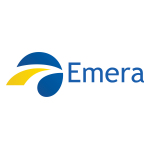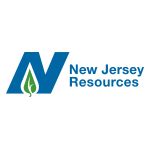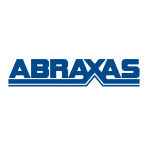FORT WORTH, Texas--(BUSINESS WIRE)--Lonestar Resources US Inc. (NASDAQ: LONE) (including its subsidiaries, “Lonestar,” “we,” “us,” “our” or the “Company”) today reported financial and operating results for the three months ended June 30, 2020.
HIGHLIGHTS
-
Lonestar responded to a collapse in crude oil prices during the second quarter by shutting-in most of its crude oil production in the month of May, and consequently reported a 2% decrease in net oil and gas production to 13,339 BOE/d during the three months ended June 30, 2020 (“2Q20”), compared to 13,630 BOE/d for the three months ended June 30, 2019 (“2Q19”). Production was comprised of 70% crude oil and NGL’s on an equivalent basis.
-
Lonestar reported a net loss attributable to its common stockholders of $42.9 million during 2Q20 compared to a net income of $11.2 million during 2Q19. Excluding, on a tax-adjusted basis, certain items that the Company does not view as either recurring or indicative of its ongoing financial performance, Lonestar’s adjusted net loss for 2Q20 was $1.4 million. Most notable among these items include: a $42.2 million unrealized (non-cash) hedging loss on financial derivatives (‘mark-to-market’) and a $2.2 million of non-recurring G&A expense. Please see Non-GAAP Financial Measures at the end of this release for the definition of Adjusted Net Income (Loss), a reconciliation of net income (loss) before taxes to Adjusted Net Income (Loss), and the reasons for its use.
-
Lonestar reported Adjusted EBITDAX for 2Q20 of $29.1 million. On a sequential basis, Adjusted EBITDAX remained flat due to stringent cost management and substantial hedging despite a 50% decrease in wellhead pricing. Please see Non-GAAP Financial Measures at the end of this release for the definition of Adjusted EBITDAX, a reconciliation of net (loss) income attributable to common stockholders to Adjusted EBITDAX, and the reasons for its use.
-
Lonestar continues to utilize commodity derivatives to create a higher degree of certainty in our cash flows and returns while mitigating financial risk. Lonestar has crude swap volumes of 7,628 Bbls/d for the balance of 2020 (Bal ’20), at an average WTI price of $57.36/Bbl, and 7,000 Bbls/d for 2021 (Cal ’21) at an average WTI price of $50.40/Bbl. In most capital spending scenarios, our crude oil hedges cover all of oil production for Bal ‘20 and Cal ‘21. Lonestar also has Henry Hub natural gas swaps covering 20,000 MMBTU/d at a weighted-average price of $2.57 per MMBTU for Bal ‘20, and 27,500 MMBTU/d at a weighted-average price of $2.36 per MMBTU for Cal ’21, which cover substantial portions of our anticipated production. Notably, all of the Company’s current hedges are swaps. Lonestar’s hedge book significantly insulates our future production from fluctuations in the commodity markets. At the end of the quarter, the mark-to-market of Lonestar’s hedge book is approximately $50 million and is a significant financial and strategic asset for the Company.
-
Highly volatile oil and gas pricing experienced during the second quarter of 2020 dictated unprecedented actions by the industry, and Lonestar is no exception. During April, oil prices averaged $14.00/Bbl and Lonestar sold its full deliverability. In May, oil pricing was extremely volatile. At the wellhead, prices started the month at approximately $5.00/Bbl and gradually recovered to approximately $20.00/Bbl by the end of the month, and averaged approximately $15.00/Bbl. Based on this price action, Lonestar elected to shut-in virtually all of its crude oil production in the month of May. By contrast, Lonestar’s properties in the Condensate Window (Horned Frog and Sooner) offered favorable cash flow and profitability, and the Company elected to sell gas and NGL’s in May from these properties, while storing all of its condensate in frac tanks in anticipation of improved pricing in June. With oil prices essentially doubling in June, Lonestar sold its full deliverability, including the condensate it stored during May, and did so at twice the price it would have received in May. As a point of reference, Lonestar estimates that if it were to have sold its full deliverability in the second quarter of 2020, oil and gas sales would have averaged 15,000 BOE/d. Lonestar estimates that third quarter sales will range between 14,000 and 14,500 BOE/d.
OPERATIONAL UPDATE
-
Production- Lonestar reported net oil and gas production of 13,339 BOE/d during the three months ended June 30, 2020. 2Q20 production volumes consisted of 6,365 barrels of oil per day (48%), 2,939 barrels of NGLs per day (22%), and 24,211 Mcf of natural gas per day (30%). Lonestar estimates that shut-ins and stored volumes reduced average quarterly production rates by 1,700 BOE/d.
-
Pricing- Lonestar’s Eagle Ford Shale assets continued to deliver favorable wellhead realizations in 2Q20. Lonestar’s wellhead crude oil price realization was $20.68/Bbl, which reflects a discount of $7.17/Bbl vs. WTI. Lonestar’s realized NGL price was $6.59/Bbl, or 32% of WTI. Lonestar’s realized wellhead natural gas price was $1.58 per Mcf, reflecting a $0.13 discount to Henry Hub.
-
Revenues- Wellhead revenues fell by $19.8 million to $17.2 million, or 53%, compared to the three months ended March 31, 2020 (“1Q20”), primarily driven by a 55% decrease in oil price realizations, a 23% decrease in NGL price realizations and a 25% decrease in natural gas price realizations.
-
Expenses- In response to the sharp downturn in oil and gas prices which have occurred during 2020, Lonestar has made a concerted effort to reduce costs among all of its vendors and service providers, and those organizational expense reductions are beginning to be reflected in the Company’s financial results. In the second quarter, total cash expenses, which include the cash portions of lease operating, gathering, processing, transportation, production taxes, general & administrative and interest expenses were $22.1 million for 2Q20, which reflects a 20% reduction compared to $27.7 million in 1Q20. On a unit of production basis, 2Q20 total cash expenses per BOE were $17.60, a 16% reduction compared to 1Q20. It is notable that these reductions were achieved in spite of incurrence of G&A expenses which the Company considers non-recurring.
-
Lease Operating Expenses (“LOE”), excluding rig standby costs of $0.4 million, were $3.7 million for 2Q20, which was 52% lower than LOE of $7.6 million in 1Q20. On a unit-of-production basis, LOE per BOE were decreased 48% quarter over quarter to $3.01 per BOE in 2Q20.
-
Gathering, Processing & Transportation Expenses (“GP&T”) for 2Q20 were $0.9 million, which was 59% lower than the GP&T of $2.2 million in the three months ended 1Q20. On a unit-of-production basis, GP&T decrease 56% quarter over quarter from $1.64 per BOE in 2Q19 to $0.72 per BOE in 2Q20.
-
Production and ad valorem taxes for 2Q20 were $1.7 million, which was 27% lower than production taxes of $2.4 million in 1Q20. On a unit-of-production basis, production and ad valorem taxes decreased 21% quarter over quarter from $1.80 per BOE in 1Q20 to $1.42 per BOE in 2Q20.
-
General & Administrative Expenses (“G&A”) in 2Q20 were $6.0 million vs. $2.9 million in 1Q20. G&A Expenses, excluding stock-based compensation of ($1.8) million in 1Q20 and $0.1 million in 2Q20, increased from $4.7 million to $5.9 million, respectively. Excluding stock-based compensation, on a unit-of-production basis, G&A per BOE increased 37% quarter over quarter from $3.56 per BOE in 1Q20 to $4.87 per BOE in 2Q20.
-
Interest expense was $10.5 million for 2Q20 vs. $11.6 million for 1Q20. Interest expense excluding amortization of debt issuance cost, premiums, and discounts decreased 9% quarter over quarter from $10.8 million in 1Q20 to $9.9 million in 2Q20. On a unit-of-production basis, interest expense per BOE decreased 1% from $8.25 per BOE in 1Q20 to $8.16 per BOE in 2Q20.
EAGLE FORD SHALE TREND - WESTERN REGION
In our Western Region, production for 2Q20 averaged approximately 7,800 BOE per day, a 1% increase from 2Q19 production. Production consisted of 2,804 barrels of oil per day (36%), 2,139 barrels of NGL’s per day (27%) and 17,144 Mcf of natural gas per day (37%). The Western Region accounted for 48% of the Company’s production during the quarter.
EAGLE FORD SHALE TREND - CENTRAL REGION
In our Central Region, 2Q20 production averaged approximately 5,311 BOE/d, a 6% decrease from 2Q19 rates. Production consisted of 3,432 barrels of oil per day (65%), 746 barrels of NGL’s per day (14%), and 6,803 Mcf of natural gas per day (21%). The decrease in production is largely driven by the shut-in of crude oil production volumes all of our wells in Gonzales, Karnes, Fayette and Lavaca Counties. The Central Region accounted for 50% of the Company’s production during the quarter.
In June, Lonestar began flowback operations on the Hawkeye #14H, Hawkeye #15H, and Hawkeye #16H. These new wells have since cleaned up after flowback and registered the following Max-30 rates which average 1,461 BOE/d:
-
Hawkeye #14H – With a 10,979’ perforated interval, the #14H recorded Max-30 rates of 1,186 Bbls/d oil, 87 Bbls/d of NGLs, and 625 Mcf/d, or 1,377 BOE/d on a three-stream basis and was achieved on a 30/64” choke. Currently, the #14H is producing 961 Bbls/d oil, 57 Bbls/d of NGLs, 410 Mcf/d gas, or 1,086 BOE/d on a three-stream basis.
-
Hawkeye #15H – With a 10,608’ perforated interval, the #15H recorded Max-30 rates 1,372 Bbls/d oil, 101 Bbls/d of NGLs, and 729 Mcf/d, or 1,595 BOE/d on a three-stream basis and was achieved on a 30/64” choke. Currently, the #15H is producing 1,062 Bbls/d oil, 64 Bbls/d of NGLs, 459 Mcf/d gas, or 1,205 BOE/d on a three-stream basis.
-
Hawkeye #16H – With a 9,885’ perforated interval, the #16H recorded Max-30 rates 1,217 Bbls/d oil, 88 Bbls/d of NGLs, and 635 Mcf/d, or 1,411 BOE/d on a three-stream basis and was achieved on a 30/64” choke. Currently, the #16H is producing 970 Bbls/d oil, 55 Bbls/d of NGLs, and 396 Mcf/d gas, or 1,091 BOE/d on a three-stream basis.
In July, the Company completed drilling operations on the Hawkeye #33H, Hawkeye #34H, and Hawkeye #35. These wells were drilled to total measured depths of 20,500, 20,358 feet, and 20,467, respectively, and are expected to have perforated intervals averaging approximately 10,800 feet. These wells are currently held in inventory as Drilled Uncompleted (DUC’s). Lonestar expects to hold a 50% WI / 37.5% NRI in these wells.
ABOUT LONESTAR RESOURCES US INC.
Lonestar is an independent oil and natural gas company, focused on the development, production, and acquisition of unconventional oil, NGLs, and natural gas properties in the Eagle Ford Shale in Texas, where we have accumulated approximately 71,153 gross (51,760 net) acres in what we believe to be the formation’s crude oil and condensate windows, as of June 30, 2020. For more information, please visit www.lonestarresources.com.
CAUTIONARY & FORWARD-LOOKING STATEMENTS
Lonestar Resources US Inc. cautions that this press release contains forward-looking statements, including, but not limited to; Lonestar’s execution of its growth strategies; growth in Lonestar’s leasehold, reserves and asset value; and Lonestar’s ability to create shareholder value. These statements involve substantial known and unknown risks, uncertainties and other important factors that may cause our actual results, levels of activity, performance or achievements to be materially different from the information expressed or implied by these forward-looking statements. These risks and uncertainties include, but are not limited to, the following: volatility of oil, natural gas and NGL prices, and potential write-down of the carrying values of crude oil and natural gas properties; inability to successfully replace proved producing reserves; substantial capital expenditures required for exploration, development and exploitation projects; potential liabilities resulting from operating hazards, natural disasters or other interruptions; risks related using the latest available horizontal drilling and completion techniques; uncertainties tied to lengthy period of development of identified drilling locations; unexpected delays and cost overrun related to the development of estimated proved undeveloped reserves; concentration risk related to properties, which are located primarily in the Eagle Ford Shale of South Texas; loss of lease on undeveloped leasehold acreage that may result from lack of development or commercialization; inaccuracies in assumptions made in estimating proved reserves; our limited control over activities in properties Lonestar does not operate; potential inconsistency between the present value of future net revenues from our proved reserves and the current market value of our estimated oil and natural gas reserves; risks related to derivative activities; losses resulting from title deficiencies; risks related to health, safety and environmental laws and regulations; additional regulation of hydraulic fracturing; reduced demand for crude oil, natural gas and NGLs resulting from conservation measures and technological advances; inability to acquire adequate supplies of water for our drilling operations or to dispose of or recycle the used water economically and in an environmentally safe manner; climate change laws and regulations restricting emissions of “greenhouse gases” that may increase operating costs and reduce demand for the crude oil and natural gas; fluctuations in the differential between benchmark prices of crude oil and natural gas and the reference or regional index price used to price actual crude oil and natural gas sales; and the other important factors discussed under the caption “Risk Factors” in our Annual Report on Form 10-K filed with the Securities and Exchange Commission, or the SEC, on April 13, 2020, as well as other documents that we may file from time to time with the SEC. We may not actually achieve the plans, intentions or expectations disclosed in our forward-looking statements, and you should not place undue reliance on our forward-looking statements. Actual results or events could differ materially from the plans, intentions and expectations disclosed in the forward-looking statements we make. The forward-looking statements in this press release represent our views as of the date of this press release. We anticipate that subsequent events and developments will cause our views to change. However, while we may elect to update these forward-looking statements at some point in the future, we have no current intention of doing so except to the extent required by applicable law. You should, therefore, not rely on these forward-looking statements as representing our views as of any date subsequent to the date of this press release.
(Financial Statements to Follow)
|
|
|
|
Lonestar Resources US Inc.
Condensed Consolidated Balance Sheets
(In thousands, except par value and share data)
|
|
June 30, 2020
|
|
December 31, 2019
|
Assets
|
Current assets
|
|
|
|
Cash and cash equivalents
|
$
|
1,259
|
|
|
|
$
|
3,137
|
|
|
Accounts receivable
|
|
|
|
Oil, natural gas liquid and natural gas sales
|
11,681
|
|
|
|
15,991
|
|
|
Joint interest owners and others, net
|
821
|
|
|
|
1,310
|
|
|
Derivative financial instruments
|
45,502
|
|
|
|
5,095
|
|
|
Prepaid expenses and other
|
7,150
|
|
|
|
2,208
|
|
|
Total current assets
|
66,413
|
|
|
|
27,741
|
|
|
Property and equipment
|
|
|
|
Oil and gas properties, using the successful efforts method of accounting
|
|
|
|
Proved properties
|
1,102,958
|
|
|
|
1,050,168
|
|
|
Unproved properties
|
77,597
|
|
|
|
76,462
|
|
|
Other property and equipment
|
21,537
|
|
|
|
21,401
|
|
|
Less accumulated depreciation, depletion, amortization and impairment
|
(705,182
|
)
|
|
|
(464,671
|
)
|
|
Property and equipment, net
|
496,910
|
|
|
|
683,360
|
|
|
Accounts receivable – related party
|
5,978
|
|
|
|
5,816
|
|
|
Derivative financial instruments
|
12,447
|
|
|
|
1,754
|
|
|
Other non-current assets
|
2,232
|
|
|
|
2,108
|
|
|
Total assets
|
$
|
583,980
|
|
|
|
$
|
720,779
|
|
|
Liabilities and Stockholders' (Deficit) Equity
|
Current liabilities
|
|
|
|
Accounts payable
|
$
|
12,896
|
|
|
|
$
|
33,355
|
|
|
Accounts payable – related party
|
269
|
|
|
|
189
|
|
|
Oil, natural gas liquid and natural gas sales payable
|
10,061
|
|
|
|
14,811
|
|
|
Accrued liabilities
|
34,098
|
|
|
|
26,905
|
|
|
Derivative financial instruments
|
2,537
|
|
|
|
8,564
|
|
|
Current maturities of long-term debt
|
531,583
|
|
|
|
247,000
|
|
|
Total current liabilities
|
591,444
|
|
|
|
330,824
|
|
|
Long-term liabilities
|
|
|
|
Long-term debt
|
11,250
|
|
|
|
255,068
|
|
|
Asset retirement obligations
|
7,251
|
|
|
|
7,055
|
|
|
Deferred tax liabilities, net
|
—
|
|
|
|
931
|
|
|
Warrant liability
|
—
|
|
|
|
129
|
|
|
Warrant liability – related party
|
1
|
|
|
|
235
|
|
|
Derivative financial instruments
|
2,993
|
|
|
|
1,898
|
|
|
Other non-current liabilities
|
1,270
|
|
|
|
3,752
|
|
|
Total long-term liabilities
|
22,765
|
|
|
|
269,068
|
|
|
Commitments and contingencies
|
|
|
|
Stockholders' (deficit) equity
|
|
|
|
Class A voting common stock, $0.001 par value, 100,000,000 shares authorized, 25,369,191 and 24,945,594 shares issued and outstanding, respectively
|
142,655
|
|
|
|
142,655
|
|
|
Series A-1 convertible participating preferred stock, $0.001 par value, 104,893 and 100,328 shares issued and outstanding, respectively
|
—
|
|
|
|
—
|
|
|
Additional paid-in capital
|
176,006
|
|
|
|
175,738
|
|
|
Accumulated deficit
|
(348,890
|
)
|
|
|
(197,506
|
)
|
|
Total stockholders' (deficit) equity
|
(30,229
|
)
|
|
|
120,887
|
|
|
Total liabilities and stockholders' (deficit) equity
|
$
|
583,980
|
|
|
|
$
|
720,779
|
|
|
|
|
|
|
|
|
|
|
|
|
Lonestar Resources US Inc.
Unaudited Condensed Consolidated Statements of Operations
(In thousands)
|
|
|
|
|
|
Three Months Ended June 30,
|
|
Six Months Ended June 30,
|
|
2020
|
|
2019
|
|
2020
|
|
2019
|
Revenues
|
|
|
|
|
|
|
|
Oil sales
|
$
|
11,976
|
|
|
|
$
|
44,726
|
|
|
|
$
|
41,986
|
|
|
|
$
|
78,310
|
|
|
Natural gas liquid sales
|
1,762
|
|
|
|
3,549
|
|
|
|
4,362
|
|
|
|
6,942
|
|
|
Natural gas sales
|
3,482
|
|
|
|
3,940
|
|
|
|
7,902
|
|
|
|
7,704
|
|
|
Total revenues
|
17,220
|
|
|
|
52,215
|
|
|
|
54,250
|
|
|
|
92,956
|
|
|
Expenses
|
|
|
|
|
|
|
|
Lease operating and gas gathering
|
4,903
|
|
|
|
8,929
|
|
|
|
14,692
|
|
|
|
16,638
|
|
|
Production and ad valorem taxes
|
1,721
|
|
|
|
2,818
|
|
|
|
4,091
|
|
|
|
5,109
|
|
|
Depreciation, depletion and amortization
|
16,575
|
|
|
|
21,515
|
|
|
|
40,929
|
|
|
|
39,486
|
|
|
Loss on sale and disposal of oil and gas properties
|
1,254
|
|
|
|
155
|
|
|
|
1,254
|
|
|
|
33,046
|
|
|
Impairment of oil and gas properties
|
—
|
|
|
|
—
|
|
|
|
199,908
|
|
|
|
—
|
|
|
General and administrative
|
5,981
|
|
|
|
3,841
|
|
|
|
8,856
|
|
|
|
8,221
|
|
|
Other expense (income)
|
58
|
|
|
|
—
|
|
|
|
(139
|
)
|
|
|
(2
|
)
|
|
Total expenses
|
30,492
|
|
|
|
37,258
|
|
|
|
269,591
|
|
|
|
102,498
|
|
|
(Loss) income from operations
|
(13,272
|
)
|
|
|
14,957
|
|
|
|
(215,341
|
)
|
|
|
(9,542
|
)
|
|
Other (expense) income
|
|
|
|
|
|
|
|
Interest expense
|
(10,512
|
)
|
|
|
(10,778
|
)
|
|
|
(22,122
|
)
|
|
|
(21,434
|
)
|
|
Change in fair value of warrants
|
—
|
|
|
|
796
|
|
|
|
363
|
|
|
|
694
|
|
|
(Loss) gain on derivative financial instruments
|
(21,141
|
)
|
|
|
9,514
|
|
|
|
80,029
|
|
|
|
(26,724
|
)
|
|
Total other (expense) income
|
(31,653
|
)
|
|
|
(468
|
)
|
|
|
58,270
|
|
|
|
(47,464
|
)
|
|
Loss (income) before income taxes
|
(44,925
|
)
|
|
|
14,489
|
|
|
|
(157,071
|
)
|
|
|
(57,006
|
)
|
|
Income tax benefit (expense)
|
4,332
|
|
|
|
(1,200
|
)
|
|
|
5,687
|
|
|
|
11,732
|
|
|
Net (loss) income
|
(40,593
|
)
|
|
|
13,289
|
|
|
|
(151,384
|
)
|
|
|
(45,274
|
)
|
|
Preferred stock dividends
|
(2,308
|
)
|
|
|
(2,112
|
)
|
|
|
(4,566
|
)
|
|
|
(4,177
|
)
|
|
Net (loss) income attributable to common stockholders
|
$
|
(42,901
|
)
|
|
|
$
|
11,177
|
|
|
|
$
|
(155,950
|
)
|
|
|
$
|
(49,451
|
)
|
|
|
|
|
|
|
|
|
|
Net (loss) income per common share
|
|
|
|
|
|
|
|
Basic
|
$
|
(1.70
|
)
|
|
|
$
|
0.28
|
|
|
|
$
|
(6.20
|
)
|
|
|
$
|
(1.99
|
)
|
|
Diluted
|
$
|
(1.70
|
)
|
|
|
$
|
0.28
|
|
|
|
$
|
(6.20
|
)
|
|
|
$
|
(1.99
|
)
|
|
|
|
|
|
|
|
|
|
Weighted average common shares outstanding
|
|
|
|
|
|
|
|
Basic
|
25,307,714
|
|
|
|
24,924,169
|
|
|
|
25,154,151
|
|
|
|
24,811,895
|
|
|
Diluted
|
25,307,714
|
|
|
|
24,924,169
|
|
|
|
25,154,151
|
|
|
|
24,811,895
|
|
|
|
|
|
|
|
|
|
|
|
|
|
|
|
|
|
|
|
Lonestar Resources US Inc.
Unaudited Condensed Consolidated Statements of Cash Flows
(In thousands)
|
|
|
|
|
|
Three Months Ended June 30,
|
|
Six Months Ended June 30,
|
2020
|
|
2019
|
|
2020
|
|
2019
|
Cash flows from operating activities
|
|
|
|
|
|
|
|
Net income (loss)
|
$
|
(40,593
|
)
|
|
$
|
13,289
|
|
|
$
|
(151,384
|
)
|
|
$
|
(45,274
|
)
|
Adjustments to reconcile net (loss) income to net cash provided by operating activities:
|
|
|
|
|
|
|
|
Depreciation, depletion and amortization
|
16,575
|
|
|
21,515
|
|
|
40,929
|
|
|
39,486
|
|
Stock-based compensation
|
24
|
|
|
(181
|
)
|
|
(1,998
|
)
|
|
352
|
|
Deferred taxes
|
445
|
|
|
1,234
|
|
|
(931
|
)
|
|
(11,688
|
)
|
(Gain) loss on derivative financial instruments
|
21,140
|
|
|
(9,514
|
)
|
|
(80,029
|
)
|
|
26,724
|
|
Settlements of derivative financial instruments
|
22,902
|
|
|
(4,888
|
)
|
|
23,998
|
|
|
(3,579
|
)
|
Impairment of oil and natural gas properties
|
—
|
|
|
—
|
|
|
199,908
|
|
|
—
|
|
Loss (gain) on disposal of property and equipment
|
—
|
|
|
—
|
|
|
83
|
|
|
(17
|
)
|
Loss on sale of oil and gas properties
|
1,254
|
|
|
155
|
|
|
1,254
|
|
|
33,046
|
|
Non-cash interest expense
|
606
|
|
|
483
|
|
|
1,374
|
|
|
1,182
|
|
Change in fair value of warrants
|
—
|
|
|
(796
|
)
|
|
(363
|
)
|
|
(694
|
)
|
Changes in operating assets and liabilities:
|
|
|
|
|
|
|
|
Accounts receivable
|
(6,306
|
)
|
|
(1,363
|
)
|
|
(189
|
)
|
|
(3,379
|
)
|
Prepaid expenses and other assets
|
(523
|
)
|
|
(996
|
)
|
|
(897
|
)
|
|
(692
|
)
|
Accounts payable and accrued expenses
|
1,052
|
|
|
9,424
|
|
|
(1,344
|
)
|
|
2,720
|
|
Net cash provided by operating activities
|
$
|
16,576
|
|
|
$
|
28,362
|
|
|
$
|
30,411
|
|
|
$
|
38,187
|
|
|
|
|
|
|
|
|
|
Cash flows from investing activities
|
|
|
|
|
|
|
|
Acquisition of oil and gas properties
|
(898
|
)
|
|
(673
|
)
|
|
(1,714
|
)
|
|
(3,025
|
)
|
Development of oil and gas properties
|
(38,071
|
)
|
|
(38,559
|
)
|
|
(72,824
|
)
|
|
(67,696
|
)
|
Proceeds from sale of oil and gas properties
|
2,520
|
|
|
(154
|
)
|
|
2,837
|
|
|
11,953
|
|
Purchases of other property and equipment
|
(112
|
)
|
|
(351
|
)
|
|
(636
|
)
|
|
(3,267
|
)
|
Net cash used in investing activities
|
(36,561
|
)
|
|
(39,737
|
)
|
|
(72,337
|
)
|
|
(62,035
|
)
|
|
|
|
|
|
|
|
|
Cash flows from financing activities
|
|
|
|
|
|
|
|
Proceeds from borrowings
|
20,157
|
|
|
24,000
|
|
|
48,157
|
|
|
54,000
|
|
Payments on borrowings
|
(55
|
)
|
|
(13,052
|
)
|
|
(8,109
|
)
|
|
(32,167
|
)
|
Net cash provided by financing activities
|
20,102
|
|
|
10,948
|
|
|
40,048
|
|
|
21,833
|
|
|
|
|
|
|
|
|
|
|
|
|
|
Net increase (decrease) in cash and cash equivalents
|
117
|
|
|
(427
|
)
|
|
(1,878
|
)
|
|
(2,015
|
)
|
Cash and cash equivalents, beginning of the period
|
1,142
|
|
|
3,767
|
|
|
3,137
|
|
|
5,355
|
|
Cash and cash equivalents, end of the period
|
$
|
1,259
|
|
|
$
|
3,340
|
|
|
$
|
1,259
|
|
|
$
|
3,340
|
|
|
|
|
|
|
|
|
|
Supplemental information:
|
|
|
|
|
|
|
|
Cash paid for interest
|
$
|
17,079
|
|
|
$
|
3,027
|
|
|
$
|
21,036
|
|
|
$
|
19,770
|
|
Non-cash investing and financing activities:
|
|
|
|
|
|
|
|
Change in asset retirement obligation
|
277
|
|
|
67
|
|
|
24
|
|
|
(455
|
)
|
Change in liabilities for capital expenditures
|
(15,769
|
)
|
|
27,654
|
|
|
(16,809
|
)
|
|
28,384
|
|
NON-GAAP FINANCIAL MEASURES (Unaudited)
Reconciliation of Non-GAAP Financial Measures
Adjusted EBITDAX
Adjusted EBITDAX is not a measure of net income as determined by GAAP. Adjusted EBITDAX is a supplemental non-GAAP financial measure that is used by management and external users of the Company’s consolidated financial statements, such as industry analysts, investors, lenders and rating agencies. The Company defines Adjusted EBITDAX as net (loss) income attributable to common stockholders before depreciation, depletion, amortization and accretion, exploration costs, non-recurring costs, loss (gain) on sales of oil and natural gas properties, impairment of oil and gas properties, stock-based compensation, interest expense, income tax (benefit) expense, rig standby expense, other income (expense), unrealized (gain) loss on derivative financial instruments and unrealized (gain) loss on warrants.
Management believes Adjusted EBITDAX provides useful information to investors because it assists investors in the evaluation of the Company’s operating performance and comparison of the results of the Company’s operations from period to period without regard to its financing methods or capital structure. The Company excludes the items listed above from net (loss) income attributable to common stockholders in arriving at Adjusted EBITDAX to eliminate the impact of certain non-cash items or because these amounts can vary substantially from company to company within its industry depending upon accounting methods and book values of assets, capital structures and the method by which the assets were acquired.
Contacts
Chase Booth, 817-921-1889
Read full story here 















